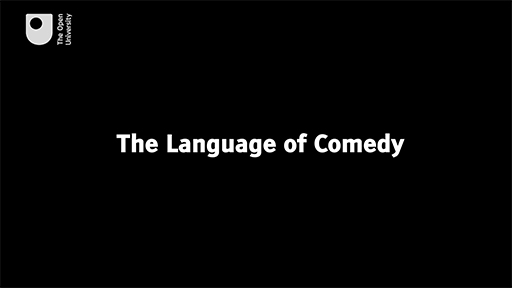7 The language of comedy
One of the most important purposes for which we creatively manipulate language is humour. Pinning down precisely what constitutes humour is a perilous business, and the concept covers a huge range of different forms of action and expression, from gags to slapstick. Rather than concentrate on something archetypal like the linguistic format of a joke, however, in this section you’ll look at other ways in which a sensitivity to language can contribute to the creation of comedy.
In the video below, you’ll hear from the comedian Graham Fellows, creator and performer of the character of John Shuttleworth, about the various influences and motivations behind his creation. As you’ll see, issues related to language have played a central part in the creation of the character, but in rather subtle ways. The humour comes from his observations of how people in his hometown speak, both in terms of their accents and turns of phrase. He then mixes this with slightly incongruous examples of language play – rhymes such as ‘burial / Mary will’ and puns such as ‘undertake’. The result is something which highlights the whimsical absurdities of normal life – and everyday language use – without resorting to stereotype or mockery.
It’s worth noting that humour is often quite culturally-specific – it draws on an audience’s recognition of peculiarities and incongruities in the environment around them. This is certainly the case with the interview with Graham Fellows and the way that he creates his comedy from observations of the environment in which he was raised and has lived.
Activity 8
Watch the video and make a note of its key points.
Make some notes in the text box below and save your answer. There is no comment for this activity.

Transcript: Video 8 The language of comedy
[LIGHTHEARTED MUSIC]
[LAUGHS]
[CLICKING FILM REEL]
[MUSIC PLAYING]
[MUSIC PLAYING]
[BEEPING TONES]
[LIGHTHEARTED MUSIC]
